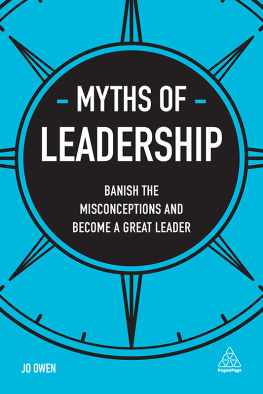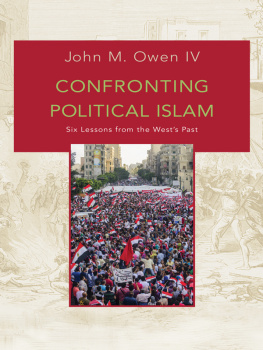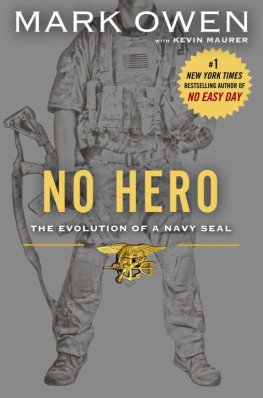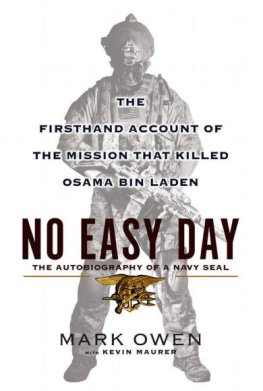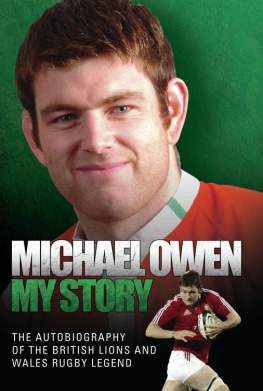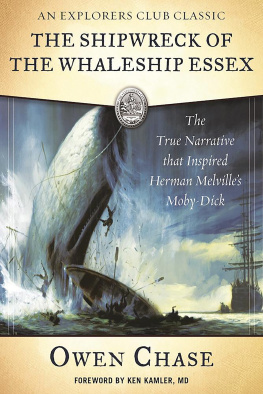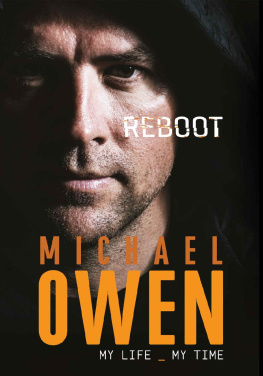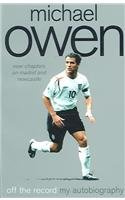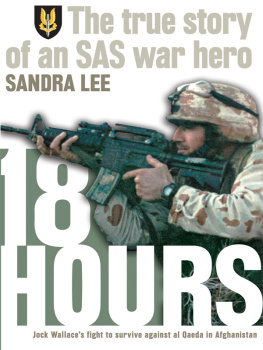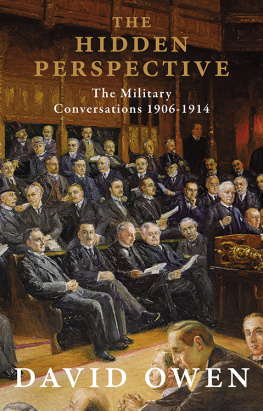Chris Owen is a British historian and researcher who was appointed MBE for his work in 2000. Separately to his professional life, he has written extensively on British military history, the life of L. Ron Hubbard and Scientology. He became interested in the story of Hubbards war career after reading about it in Russell Millers biography Bare-Faced Messiah . Owen has also advised other authors on aspects of Hubbards life and career.
Introduction
Pasts Imperfect
Between 1941 and 1945, over sixteen million American men and women served in the United States Armed Forces. Some went on after the war to achieve fame in politics, sports and the arts. One veteran, though, made his mark in another and quite unexpected way: a few years after demobilizing, Lieutenant Lafayette Ronald Hubbard, United States Naval Reserve, became the founder and leader of the controversial Church of Scientology.
Hubbards wartime service with the United States Navy was a pivotal time in his life. Before the war he had dreamed of achieving greatness, even boasting that he would smash his name into history. He was now a participant in the biggest conflict in history. What better opportunity was there for glory?
To Scientologists, L. Ron Hubbard is a much-decorated war hero and master mariner who served his country with distinction. He commanded warships, fought bravely against the Japanese and Germans and suffered serious combat injuries. He had a miraculous recovery through the use of his own revolutionary mental techniques, which he developed into Dianetics and Scientology. At the wars end, he received numerous decorations in recognition of his valor and accomplishments.
To the US Navy, the Veterans Administration, and those who served with him, the picture is very different. His naval record shows that he briefly had command of two small vessels and was removed from both of them when he made serious errors of leadership. Several of his superiors were strongly critical of him and considered him incapable of serving independently without close supervision. He spent most of his war service ashore, far from any combat zones. He never saw combat. He was not wounded but instead spent extended periods being treated for commonplace physical afflictions. He was awarded only a handful of standard decorations for his war service.
Echoes of Hubbards time in the US Navy can be seen throughout Scientology. He awarded himself the rank of Commodore and assembled a small fleet of ships in the 1960s, from which he oversaw the activity of the Church of Scientology for several years. He established an inner religious order of dedicated Scientologists who even today use quasi-naval ranks and uniforms. And he created an intelligence service within the Church of Scientology to mimic Naval Intelligence, serving as a formidable worldwide apparatus for crushing internal and external threats to Scientology and his own interests.
Hubbards war service also provides the justification for the Church of Scientologys existence. Tommy Davis, formerly the Churchs principal spokesman, has said that if it was true that Hubbard had not been injured, the injuries that he handled by the use of Dianetics procedures were never handled, because they were injuries that never existed; therefore, Dianetics is based on a lie; therefore, Scientology is based on a lie. The fact of the matter is that Mr. Hubbard was a war hero.
What, then, is the true story of Ron the War Hero? This book takes a look at the conflicting accounts in order to sift out the grains of truth. It includes copies of key documents from Hubbards service history and contrasts them with what Hubbard and the Church of Scientology have claimed.
History, writes the Irish historian T.W. Moody, is a continuing, probing, critical search for truth about the past History of a matter of facing the facts of the past, however painful some of them may be; mythology is a way of refusing to face the historical facts. The study of history not only enlarges truth about our past, but opens the mind to the reception of ever new accessions of truth. On the other hand the obsession with myths, and especially the more destructive myths, perpetuates the closed mind.
The Church of Scientology is rightly critical of erroneous or conjectural statements made by its critics and spends much time pointing out their errors. It is only fair that its own statements should be subjected to the same critical treatment in order to find the truth about Hubbards military career. The story that emerges is not so heroic but is still remarkable in its own way.
Chapter 1
Scientologys Account
I am the last person to advertise war. I served the US Government and then the US Navy for several years, was honorably discharged as an officer and really dont care to say much more about it. L. Ron Hubbard
According to L. Ron Hubbard and the Church of Scientology, he excelled as a machine gunner with the National Guard and served with distinction in the US Marine Corps before being commissioned into the US Navy, either before the war or alternatively, on its outbreak. Just before he joined the Navy, he was responsible for the establishment of the US Army Air Force.
He carried out a two thousand mile voyage to Alaska in 1940 on behalf of the US Navy and subsequently rewrote the Navys Hydrographic Office Publications. His work on navigation was so far-reaching that the Navy was anxious to enlist him and he was summoned to Washington, D.C. for a debriefing by Rear Admiral Chester Nimitz, later famous for his role in the Pacific.
After the US entered the war, he was ordered to the Philippines, which he had known as a youngster and was the first of three theaters of the war in which he saw combat and fought with distinction. Alternatively, he was posted to the USS Edsall , on which he was the Gunnery Officer, and landed on the north coast of Java in the Dutch East Indies on the same day as Japan attacked Pearl Harbor (December 7, 1941). He was cut off near Surabaya by invading Japanese forces in February 1942. After a gruelling trek through the jungle to the south coast, he scrambled into a rubber raft and sailed across the Timor Sea to within a hundred miles of the Australian coast before being picked up by a friendly destroyer. He used the skills he learned in the Boy Scouts to keep himself alive.
An alternative version is that he first served in Australia where he coordinated naval intelligence activities and was Senior Officer Present Ashore. Another alternative is that he was in Australia working to coordinate relief for General Douglas MacArthurs forces. He worked as a counter-intelligence officer to organize relief for the beleaguered American forces on Bataan.
While escaping from the Japanese on Java, he suffered severe injuries after being machine-gunned in the back. Alternatively, he fractured an ankle while evading the Japanese, or was wounded in the thigh while serving in the Battle of the Java Sea. He was flown home in the Secretary of the Navys private plane as the first US casualty returned from the Far East, having seen hard action in the South Pacific.
Another account states that during 194142 he served in Brisbane as a mail officer manning the only anti-aircraft battery in Australia. His posting ended when he was relieved by fifteen officers of rank.
Alternatively, he commanded a gunboat in the Pacific, sailed to a Japanese-occupied island, tied up at the dock, went ashore and wandered around by himself for three days.



